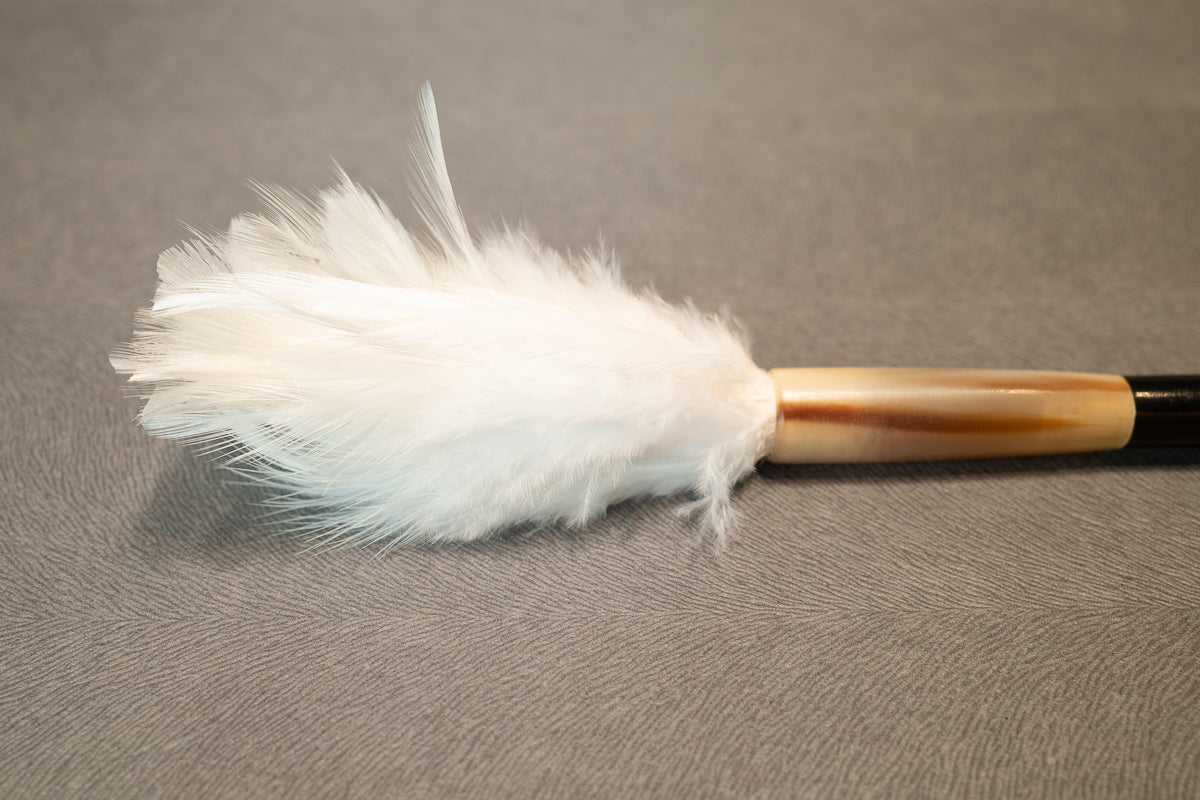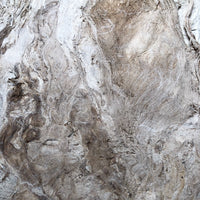Update:December 26th, 2024
Different theories exist regarding the origin of the brush. It is believed that in ancient Egypt, pens and brushes made from reeds and other plant fibers were already in use.
Later, in China in the 200s B.C., as the writing system evolved, brushes made from animal hair, along with ink sticks, inkstones and paper—known collectively as the "Four Treasures of the Study"—were developed.
In Japan, the history of the brush is interpreted in various ways. The influence of Buddhist culture, along with the development of unique Japanese elements such as the Kana script, contributed to advancements in ink-making and paper-making techniques.
This article features brushes made from unusual materials, such as bird feathers, which differ from the commonly used natural hair brushes made from weasel, horse, raccoon, deer and goat hair.
Chicken Feather Brush
The feathers have a soft, cotton-like texture that you will find irresistible to touch!
The contrast between the pure white feathers and the well-polished shaft creates a luxurious feel.
This brush features a much softer tip than other animal hair brushes, allowing for the creation of a variety of unique strokes with the right balance of randomness.
It is available in three sizes: small, medium and large; with a long handle that allows you to create a wide range of drawing styles.

Chicken Feather Brush
*Sorry, this item is no longer available.
The Chicken Feather Brush (small) has shorter feathers, which makes it easier to control than longer ones, and using the entire feather may create a unique touch. You can enjoy the difference in strokes between the tip and the belly.

Chicken Feather Brush/ Small
Wild Bird Feather Brush
*Sorry, this item is no longer available.
Wild Bird Feather Brush is one of the largest brushes among the rare brushes featured in this article, with a feather length of about 120mm.
This brush allows you to create edgy and powerful strokes by soaking up plenty of paint or Sumi ink .
However, the inconsistent design of wild birds' feathers, characterized by random movements and varying lengths, may inspire you to create playful and dynamic brush strokes.

Wild Bird Feather Brush
Peacock Feather Brush
*Sorry, this item is no longer available.
The Peacock Brush has one of the most fascinating and beautiful appearances among the rare brushes.
It is made of the precious tail feathers instead of the decorative back feathers. As you can see, it has a symbolic peacock pattern and the color changes depending on the viewing angle. This kind of color is called “structural color” which is interfered with by light, as it also can be found in effect pigments.
Each feather has a very thick and soft texture, so it is difficult to control the tips, but on the contrary, this characteristic brings out interesting strokes and patterns.
With various movements, it can draw dry or soft lines that have different touches from animal hair brushes.

Peacock Feather Brush
Waterfowl Feather Brush
This brush features a flat belly and is crafted from multiple layers of waterfowl feathers.
Each brush showcases unique patterns and colors based on the natural feathers used, which adds to the charm of these rare brushes.
The waterfowl brush stands out because of the size, shape, and texture of its feathers.
It allows for dynamic brush strokes with the feathers laid down, as well as the ability to achieve delicate yet strong drybrush techniques.
Straw Brush
*Sorry, this item is no longer available.
This brush is made from dried plant stems and straw. The brush can produce unique rough brushstrokes.
The fiber is stiff but not too dense, which is ideal for drybrush techniques.
However, it may tear thin paper or delicate substrates, so please test it before using it on your artwork.
Monkey Hair Brush
Last but not the least, the Monkey Hair Brush.
The hair is slightly stiff and the length is 50mm which is capable of drawing gentle lines and textures thanks to how well the brush can absorb water or Sumi ink and paint.
Not to mention, it is also an interesting brush that has a very good ink absorption which allows the brush to move smoothly on the paper by painting with the whole bristle.

Monkey Hair Brush
Bamboo Handle Brush
These brushes have a handle made of bamboo with large knots.
Bamboo Handle Brushes come in two different types: squirrel hair, known for its softness and excellent water absorption; and goat hair, preferred for its smooth drawing capabilities. Therefore, please choose the one that best suits your needs and preferences.
Both brushes have a length of 55mm, making them long enough for various uses. The tips are reinforced with glue, allowing for versatile application, whether you’re aiming for fine line drawing or thicker strokes based on how you loosen the bristle.
All the brushes introduced in this article can create various expressions with the combination of substrates, surface textures and pre-sizing techniques.
If you are interested in exploring new artistic styles or simply want to add these unique brushes to your collection, now is the perfect time to consider acquiring one!
Translated by Atsumi Okano, Nelson Hor Ee Herng











